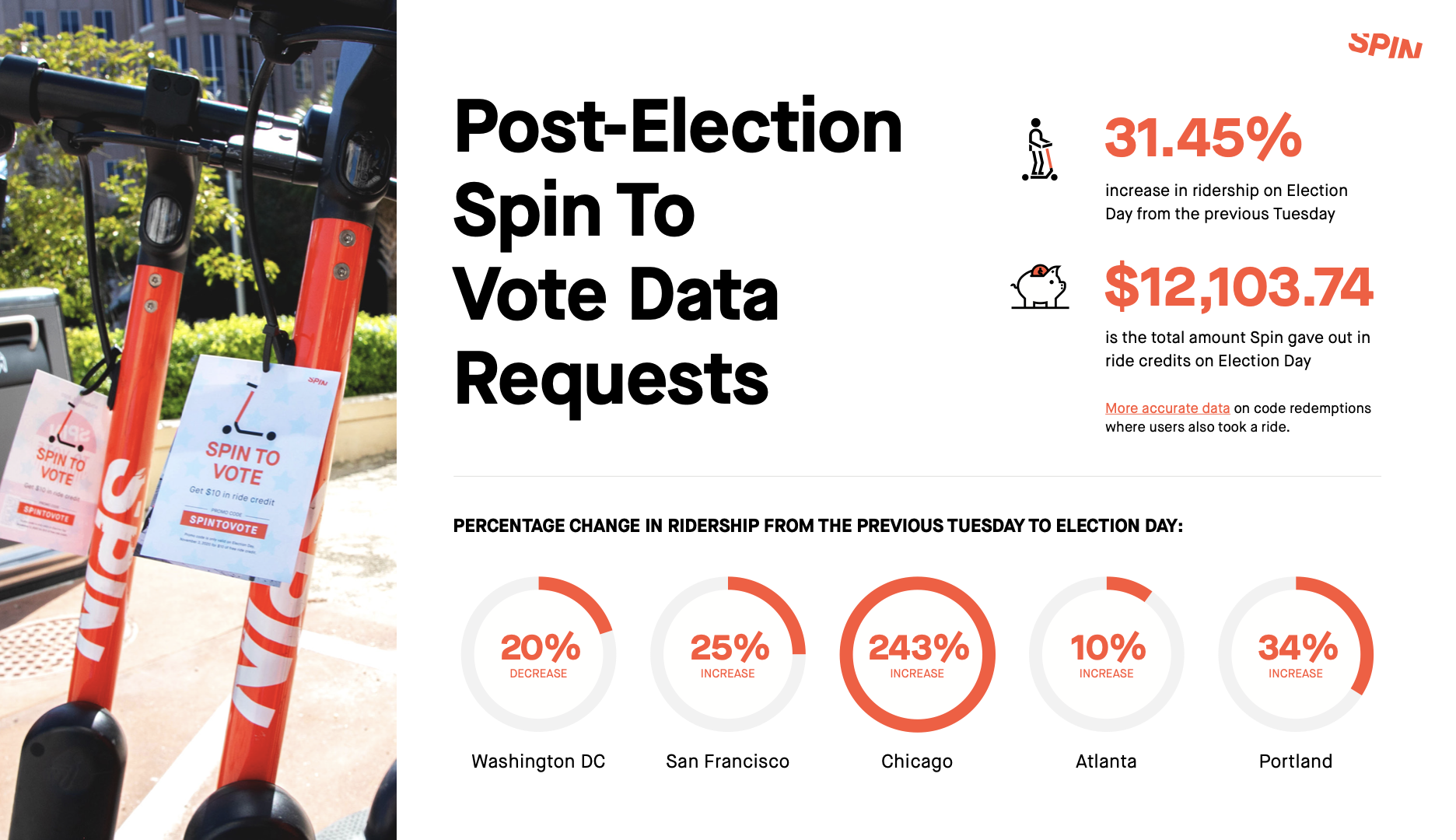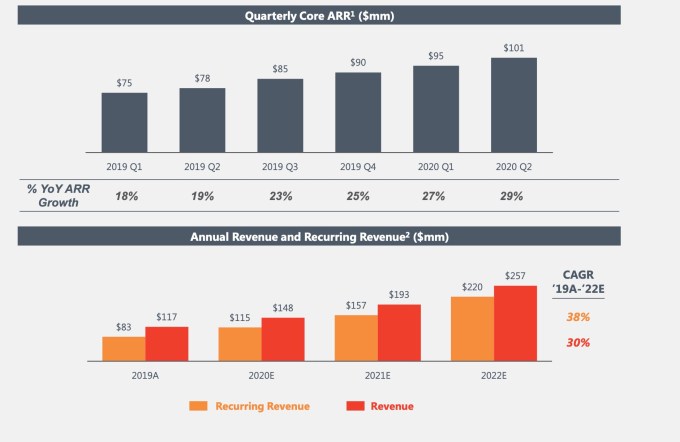The Station is a weekly newsletter dedicated to all things transportation. Sign up here — just click The Station — to receive it every Saturday in your inbox.
Hi folks, welcome back to The Station, a newsletter dedicated to all the present and future ways people and packages move from Point A to Point B.
Let’s get right to it. Companies tried to pack in the news before the Thanksgiving holiday, which means we have a lot to um, digest.
Email me anytime at kirsten.korosec@techcrunch.com to share thoughts, criticisms, offer up opinions or tips. You can also send a direct message to me at Twitter — @kirstenkorosec.
Micromobbin’

COVID-19 has obliterated entire business models, while boosting others. Micromobility startups were some that suffered in the early days of the pandemic. However, there appears to be a recovery. Lime is the latest example.
Lime said this week it has moved beyond the financial hardship caused by the COVID-19 pandemic, is now largely profitable. Alex Wilhelm and I raised our eyebrows at this and asked for more detail. As you might know, there are all kinds of tricks to be able to claim profitability. What we learned from the company — and yes, reader I know, it’s a private company and therefore no public filing — was rosier than we expected.
Lime said it was both operating cash flow positive and free cash flow positive in the third quarter — a first — and is on pace to be full-year profitable, excluding certain costs (EBIT), in 2021. In general, cash flow positivity is an important threshold for a startup to reach because it implies that the company can largely self-fund from that point forward, limiting its dependency on external cash for survival.
Lime also claimed that it “reached EBIT positive at the company level over the summer.” The specifics of the phrase “EBIT positive” are important. Was the company employing strict EBIT on its math and not discounting share-based compensation, or was it measuring using adjusted EBIT as many startups do, removing the cost of share-based compensation that shows up in GAAP results? According to the company the number did exclude share-based compensation, making the news slightly smaller.
And finally, the last most bullish data point. The company said it expects to be full-year profitable in 2021. TechCrunch asked for specifics because again how one measures profitability matters. It turns out, Lime is basing this projection on EBIT, as opposed to more traditional net income. For a startup this is not a surprising decision, but before we declare Lime fully “profitable,” we’ll want some more GAAP metrics.
In other Lime news …
The company launched its fourth-generation scooter in Paris, a device designed to last more than two years. The Gen4 will roll out across Europe in early 2021. Much of the Gen4 work was done by engineers at Uber’s Jump micromobility unit. Lime did some tweaking to the Jump team’s work, specifically improving the scooter’s durability and swapped out some parts that would allow the company to reuse parts from existing Lime vehicles.
Lime also teased that a “third mode,” beyond bikes and scooters, is also in the works for the first quarter of 2021, as well as the addition of third-party companies to its platform.
I recommend that you take the time to read an article by two of TechCrunch’s European reporters Natasha Lomas and Romain Dillet. The pair examined the urban transformation that is underway in Paris, Barcelona, London and Milan, specifically policy decisions aimed reclaiming streets for feet and two wheels.
A few highlights include Paris Mayor Anne Hidalgo’s efforts to create a “15-minute city” and Barcelona’s ambitious pedestrianization plan focused on creating ‘superilles’ or ‘superblocks.’
Grab a coffee and get comfortable for this detailed breakdown.
Oh! wait … a couple of other micromobbin’ items …
Voi, another European electric scooter startup, is equipping its devices with computer vision sensors to detect pedestrians and sidewalks. The aim, VentureBeat reports, is to help users avoid collisions and comply with local legal requirements.
Zipp Mobility, the Irish micromobility startup, is now operating in two Buckinghamshire towns under a year-long pilot program. The company will launch with 25 electric scooters in each area, with plans to increase the fleet size to 300 scooters over the next two months.
Deal of the week

The summer of the SPAC has spilled over into fall and is threatening to continue into 2021. Startups aiming to produce and sell electric vehicles seem to be particularly fond of this path to becoming a public company. We have Canoo, Fisker, Lordstown Motors, Hyliion, Nikola and now Arrival.
Arrival was an unknown UK startup that operated quietly for about five years until bursting on the public scene in January with a $110 million investment from Hyundai and Kia. It soon became one of the UK’s most valuable startups with a valuation of $3.4 billion.
Arrival’s aim is to produce electric vehicles that are competitive in price with traditional fossil fuel-powered vehicles and lower than other EVs. Arrival’s pitch is that its modular electric “skateboard” platform, which can be used on a range of different vehicle types, along with its use of microfactories are the key ingredients to its price competitive sauce. So far, the company has two vehicles — an electric van and bus. Production of its buses are expected to start in the fourth quarter 2021 and its vans in 2022.
OK, so the gist of the deal is this: Arrival agreed to merge with special purpose acquisition company CIIG Merger Corp. with a market valuation up to $5.4 billion. Arrival raised $400 million in private investment in public equity, or PIPE, from investors that included Fidelity Management & Research Company, Wellington Management, BNP Paribas Asset Management Energy Transition Fund and funds managed by BlackRock. Arrival will have about $660 million in cash proceeds.
On a side note, the company was founded by Denis Sverdlov, who also created Roborace.

Image Credits: Arrival
Other deals that got my attention this week …
Electric Last Mile Solutions, a Michigan-based electric vehicle startup founded by former Accuride and Ford executive Jason Luo, is in talks to go public through a merger with Forum Merger III Corp., Bloomberg reported. The startup aims to produce mre than 100,000 vehicles a year at a plant in Indiana. Caveat: the terms are not finalized.
Fenix, a new Abu Dhabi micromobility startup, raised $3.8 million in a seed round investment led by Israel-based venture firm Maniv Mobility. The deal is notable for a few reasons. Remember Circ? It’s the Middle East scooter company that Bird acquired and then shuttered in several cities. The founders of Circ, Jaideep Dhanoa and IQ Sayed (who were also colleagues at Careem), started Fenix. Maniv Mobility founder and managing partner Michael Granoff told me this is the first Israeli VC to invest in a UAE-based tech company. Granoff is joining the Fenix board. “Aside from more momentum toward clean and practical urban mobility, I think it heralds an amazing new age of cooperation in the Middle East,” Granoff wrote me in an email touting the deal.
Forto, a digital freight forwarder, raised $50 million in a funding round led by Inven Capital, a growth fund out of the Czech Republic. Additional investment came from Iris Capital as well as existing investors Rider Global, Northzone, Cherry Ventures, Unbound (Shravin Mittal) and the Italian venture fund H14.
Gojek, the ride-hailing firm, raised $150 million from Indonesia’s biggest telecom network Telkomsel. This is being sold as a “strategic partnership,” and seems to expand upon the companies’ existing relationship. Since 2018, Gojek and Telkomsel have maintained a deal to subsidize the cost of mobile data consumed by the ride-hailing firm’s driver partners.
Lightning EMotors, a Colorado-based fleet electrification company, is in advanced talks to go public through a merger with blank-check firm GigCapital3 Inc., Bloomberg reported. There is still some ways to go on this deal, however. GigCapital3 is trying to raise about $100 million in new equity to support a transaction that would create a combined entity worth $700 million to $1 billion, including debt.
Loadsmart, an on-demand digital freight platform, raised $90 million in a Series C funding round co-led by funds under management by BlackRock and Chromo Invest. Strategic investor TFI International, a leader in the logistics space, also participated in this round. Maersk, a global oceanic shipping leader and one of Loadsmart’s strategic backers since its Series A round, also participated.
Ride Vision, an Israeli startup building an AI-driven safety system to prevent motorcycle collisions, raised a $7 million Series A round led by crowdsourcing platform OurCrowd. YL Ventures, Mobilion VC and motorcycle mirror manufacturer Metagal also participated in this round. The company has now raised a total of $10 million.
Strava, the activity and fitness data-tracking platform, raised $110 million in new funding, in a Series F round led by TCV and Sequoia, and including participation by Dragoneer group, Madrone Capital Partners, Jackson Square Ventures and Go4it Capital.
Election day mobility: scooters
Spin, the micromobility subsidiary of Ford, sent me an interesting graphic and some data points about its ridership on Election Day.
Now, this is just one company’s data. We don’t want to get ahead of ourselves and make wild presumptions. Think of this an interesting tidbit on how some people were getting around November 3 and one company’s strategy to encourage ridership to the polls.
Spin recorded a 31.45% overall increase in ridership on Election Day from the previous Tuesday. The company offered a $10 discount for riders commuting to the polls November 3 under its SpinToVote campaign, which certainly helped push those ridership numbers higher. Spin said nearly 3,000 riders used the SpintoVote discount.
Cities with the highest increases in ridership on Election Day were Chicago with a whopping 243% rise, Cleveland with 193%, San Francisco with 25% and Atlanta with a10% increase. Spin also tracked use of its “Spin to Vote” campaign. Riders in Atlanta, Baltimore, Chicago, Cleveland, San Diego and Washington D.C. had the highest opt in for that discounted ride campaign.
Update: Lime sent me some of their data, which they also posted in a blog. The company said riders used the Lime to the Polls promotion code for 20% of all U.S. trips on Election Day. This is double the percentage of trips taken during the company’s first Lime to the Polls campaign for the 2018 midterm elections.
How did you get to your polling location? (for those who didn’t mail in their ballot)

Image Credits: Spin
Notable reds and other tidbits
Seriously, folks. So.much.news.
California Public Utilities Commission approved Thursday two new programs to allow permitted companies to provide and charge for shared rides in autonomous vehicles. While the industry mostly cheered the news, some have argued that the approval process to secure one of these permits adds unnecessary bureaucracy that could delay deployments by more than two years.
General Motors had a bunch of announcements this week. First up, the company is getting back into the insurance biz, but this time more in step with the connected-car era. The service, called OnStar Insurance, aims to leverage the vast amounts of data captured through its OnStar connected car service, which today has more than 16 million members in the United States.
The U.S. automaker also upped its budget for electric vehicles and automated technology by 35%. GM said it will spend $27 billion over the next five years on EVs and AVs. GM is also accelerating its go-to-market timeline and adding more EVs to its portfolio plans. The new plan is to bring 30 new electric vehicles to a global market through 2025.
Lordstown Motors said it plans to establish an automotive R&D center in Farmington Hills with support from the Michigan Strategic Fund, the Michigan Economic Development Corporation announced today. The project is expected to create 141 jobs.
Luminar locked in a supplier deal to furnish Intel subsidiary Mobileye with lidar for its fleet of autonomous vehicles. The deal will see a rising star paired with a company that has long dominated the automotive industry. I breakdown why this is seemingly small deal is worth paying attention to.
Motional, the Aptiv-Hyundai $4 billion joint venture aimed at commercializing autonomous vehicles, received approval from the state of Nevada to test fully driverless vehicles on public roads. The company plans to begin driverless testing on public roads in Las Vegas sometime in early 2021.
National Highway Traffic and Safety Administration officials released an advance notice of proposed rule-making for automated driving. Remember last week when I said rumor had it that U.S. regulators planned to make some moves that will affect the autonomous vehicle industry? Specifically, I noted that UL 4600, a standard created by Underwriters Laboratories that offers a guide for how to build the safety case for an AV design, is rumored to be the front runner.
Welp … the framework released this week includes a whole section for UL 4600. You can view the NHSTA Framework for Automated Driving here.
NYT does a deep dive into the arms race in car stereos.
Panasonic signed a preliminary agreement with the Nordic energy company Equinor and engineering and industrial company Norsk Hydro to collaborate on building a battery business in Northern Europe. Ok, I know, it’s a “preliminary agreement.” This got my attention because of the battery supplier battle that between LG Chem and Panasonic. And as TechCrunch’s Jonathan Shieber notes: Panasonic’s push into Northern Europe alongside two big regional players in hydrocarbons and renewable energy is a sign of the potential that exists in the European market beyond automotive.












